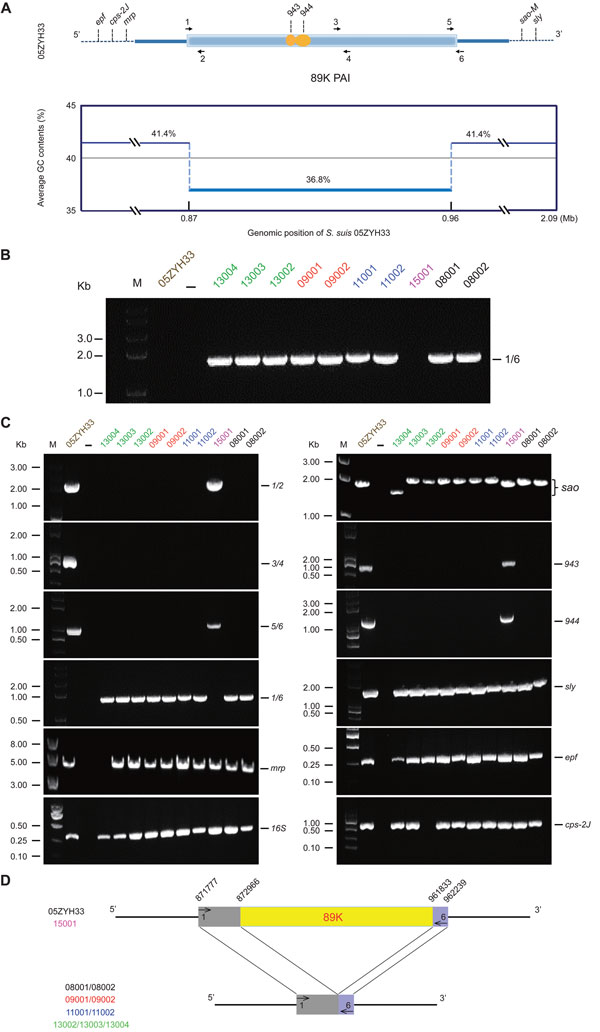Volume 22, Number 6—June 2016
Letter
Loss of 89K Pathogenicity Island in Epidemic Streptococcus suis, China
Figure

Figure. Molecular dissection for the 89K pathogenic island (PAI) in epidemic Streptococcus suis and the relevant virulence factors, China. A) Scheme for the 89K PAI and the relevant virulence factors on the bacterial chromosome of 05ZYH33, a representative isolate from the 2005 China outbreak in humans. 89K PAI is characterized with a light-blue column in which the important 2-component system-encoding genes (943 and 944) are highlighted in orange. Dashed lines indicate the genomic sequences outside of 89K. Black arrows indicate the 3 pairs of specific primers (refers to 1, 2, 3…6) used for the 89K assay. Five other genes outside of 89K (epf, cps-2J, mrp, sao-M, and sly) are labeled in black. The average GC value (guanine-cytosine content) of 89K is 36.8%, dramatically lower than the 41.1% of the whole genome of 05ZYH33. B) Probing the presence of 89K PAI in human S. suis isolates. The pair of specific primers 1 plus 6 is applied to determine whether the 89K PAI is present in the bacterial isolates. Determination criteria can be described as follows: PCR-negative results imply the existence of 89K; successful amplification of a DNA fragment in ≈1.5 kb indicates the absence of 89K. Except that Stre15001, a human S. suis serotype 2 isolate from the meningitis patient in 2015, contain the 89K PAI, all other 9 isolates are unexpectedly found not to carry 89K, which direct DNA sequencing further verified. C) Molecular characteristics of human S. suis isolates collected during 2008–2015 in Shenzhen City. 05ZYH33 here functions as the positive control; –, negative control. All the primers used here are listed in Technical Appendix Table 1), and the relevant PCR products were separated in 1.0% agarose gel. In total, the 12 genes/DNA fragments of interest were 1/2, 3/4, 5/6, 1/6, mrp, 16S, sao, 943, 944, sly, epf, and cps-2J, respectively. D) Scheme for the loss of the 89K PAI among the Chinese S. suis strains. The numbers 1 and 6 represent a pair of specific primers designed for the detection of 89K PAI. Yellow indicates the 89K PAI. The 10 newly isolated strains are listed as 08001, 08002, 09001, 09002, 11001, 11002, 13002, 13003, 13004, and 15001.
1These authors contributed equally to this article.